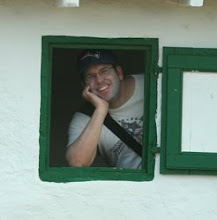
On Sunday we went out looking for waterfowl. We started at Sterling Peat. Its amazing to see how this area has grown up in the last year ago. When the summers are hot and dry it seems like nothing grows in the sandy soil. But, this year medium sized bushes were windspread. Some of them had these weird red "
berries". I thought that they might be invasive
Russian Olive but comparing photos it looks like I was wrong. Also, along the water we found a very
small yellow flower. I tried to identify it but the best I could do was guess that it was a species of cinquefoil.
As for birds, there were dozens of Robins and sparrows in the bushes. We did locate one Greater Yellowlegs foraging along the water's edge and a Belted Kingfisher perched in a dead tree. But, there weren't much of anything in terms of waterfowl. A large flock of Canada Geese did come in for a landing on the water as we watched though.
Before we left, we took a walk along the "back" side of the pond. There I found some White-throated Sparrows flocking together in the bushes. Along the path were several
large clusters of mushrooms. As I made my way deeper into the undergrowth, I spooked a Great Blue Heron who had been wading in the water.
Then, we left the Peat for our next stop. Along the road we spied three Red-tailed Hawks circling above and an Osprey perched in a tree along the road.
Birds: Greater Yellowlegs, White-throated Sparrow, American Robin, Great Blue Heron, American Goldfinch, Common Yellowthroat, Belted Kingfisher, Canada Goose, Mallard, Blue Jay, Song Sparrow, Turkey Vulture, Double-crested Cormorant, Greater Black-backed Gull, Red-tailed Hawk, Osprey
Next we headed over to River Road. We didn't stay long since the only bird we saw was a single Common Loon.
From there we drove over to the West Washacum Lake. There were one or two Mallards on the water but that was about it. Land birds sighted were a Downy Woodpecker and a Mourning Dove.
Our next stop was Fort Meadow Reservoir in Marlboro. This was probably our best body of water for birds all day. There was a large flock of Ruddy Ducks as well as two Ring-neck Ducks and a Coot. We were also surprised to see a single Killdeer.
Birds: Mute Swan, Rudy Duck, Canada Goose, Mallard, Coot, Ring-neck Duck, Ring-bill Gull, Killdeer
Next we drove over to Wachusett Reservoir in the Dike 110 are. There we were able to spot several Great Egrets and Great Blue Herons across the water. Cormorants and Loons shared the water and there was a group of Crows jumping about on the banks. Just as we went to leave we were buzzed by a Merlin. After a quick up-close look we were able to watch as it flew higher and higher.
Birds: Double-crested Cormorant, Common Loon, American Crow, Merlin, Great Egret, Great Blue Heron
Our final stop was at Little Chancy. As we drove in, we spotted a
Groundhog who was walking back to its den. He let me get close enough to take one or two acceptable shots of him before ducking back dwon the tunnel. At the lake, we were surprised to find a nice flock of foraging
Yellow-rump Warblers. We also heard Mockingbirds, Catbirds, and at least one Red-bellied Woodpecker. Not a bad day of birding.









